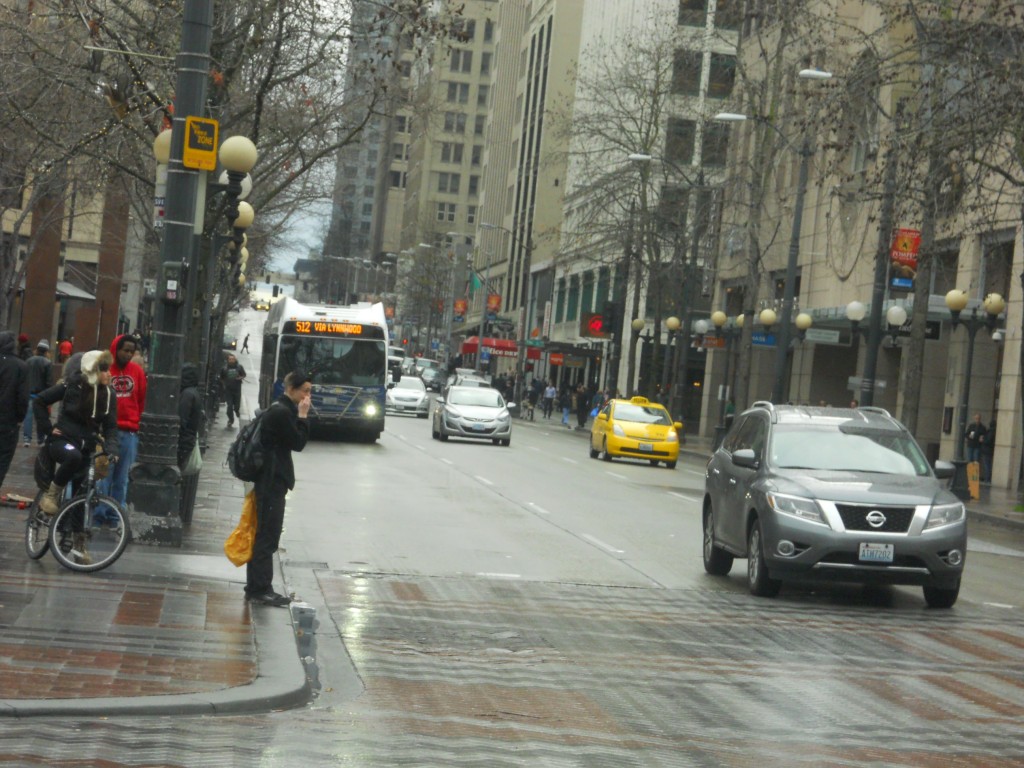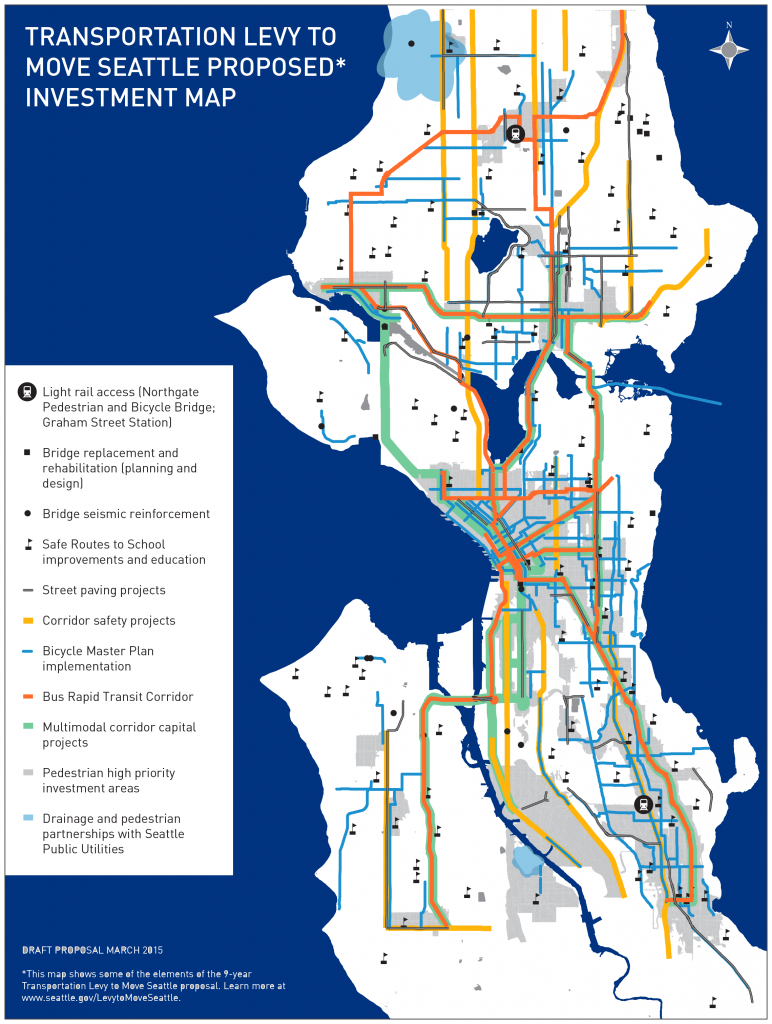
In November, the City of Seattle will ask voters for a property tax levy to put money where their mouth is on the Move Seattle transportation vision. Approval would supplant the expiring $365 million Bridging the Gap funding with an ambitious nine-year $900 million levy. Earlier this month, Mayor Ed Murray unveiled the list of priority projects that this money would go to, with a little something for everybody. Half of the Bicycle Master Plan network would be built out, 16 bridges would be reinforced, 250 lane-miles would be repaired, and 100 blocks of new sidewalks would be built, for starters. In conjunction with the City’s new Vision Zero target, Move Seattle has the potential to radically transform Seattle streets for the better.
Seattle Transit Blog reports the property tax would be 61 cents per $1,000 of assessed value, or about $275 per year for the homeowner of median-value $450,000 house. That compares to 36 cents per $1,000 for Bridging the Gap last year. $900 million starts to approach the amount called for by Nick Ferris at The Urbanist, who noted the city has a transportation maintenance backlog of $1.8 billion. The city needs to spend $190 million per year just to keep up the growing backlog; other funding will come out of the City’s general fund (Bridging the Gap supplied 25 percent of transportation funding over the past nine years).

Voters in all neighborhoods will have good reason to approve Move Seattle. Its list of projects are geographically and modally diverse, and some will be integrated with the missions of other city services. The levy funds would be grouped in four broad project categories:
Safety ($350 million)
- Reducing injuries: up to 15 corridor safety projects (road diets) to reduce crashes, up to 12 Safe Routes to School projects to make walking and bicycling safe for every student in the city, and increasing crosswalk repainting.
- Bicycling and walking: 50 miles of protected bike lanes and 60 miles of greenways (less than what Cascade Bicycle Club is calling for), 225 blocks of repaired sidewalks in urban villages, 750 curb ramps and crossing improvements, and completing the Burke-Gilman Trail’s missing link.
- Bridges: eliminate maintenance backlog on 16 seismically vulnerable bridges, replace the last timber bridge on Fairview Avenue, and begin design for major bridge replacements (unspecified).
Affordability ($275 million)
- Maintenance: repave 35 percent of the busiest streets with an average of 7 to 8 arterial lane-miles per year to reduce backlog.
- Multiple modes: work with building owners and businesses to ensure access to transit passes, car share, bike share, and minimize structured parking to reduce rents.
Systematic connectivity ($170 million)
- Street modernization: up to 10 complete street projects, eliminate transit bottlenecks, establish up to 7 bus-rapid-transit corridors, and improve signal timing on up to 5 corridors.
- Light rail: new Link station at Graham Street on existing line in southeast Seattle, full funding for the Northgate Pedestrian and Bicycle Bridge, and improved bike and pedestrian infrastructure connecting to light rail stations.
- Walking and biking: 100 blocks of new sidewalks in transit corridors, slowing down traffic on residential streets, and 1,500 new bike parking spaces.
Economic and social vibrancy ($105 million)
- Freight: Build the Lander Street Overpass and East Marginal Way corridor.
- Neighborhood priorities: complete up 35 minor street projects identified as the most important by neighborhood residents.
- Natural systems: Replace removed street trees with two new ones, create a new rapid response tree crew, and partner with Seattle Public Utilities on coordinating street projects with utility upgrades, including addressing stormwater flooding issues.
The City is being transparent in this process has detailed specific projects that will be funded. There are a number of ways to get involved, including attending public meetings, signing up for email updates, and contacting City staff with feedback. The three formal community meetings coming up are:
- March 28, 10am-12pm at New Holly Gathering Hall (7054 32nd Ave S)
- March 30, 6-8pm at Roosevelt High School Commons (1410 NE 66th St)
- March 31, 6-8pm at West Seattle High School Gymnasium (3000 California Ave SW)
Stay tuned to this space for updates on levy projects and the 2015 election, which along with the City Council’s new district elections will have enormous implications for the future of mobility and quality of life in one the nation’s fastest growing cities.
This article is a cross-post from The Northwest Urbanist, the personal blog of Scott Bonjukian. He is a graduate student at the University of Washington’s Department of Urban Design and Planning.
Scott Bonjukian has degrees in architecture and planning, and his many interests include neighborhood design, public space and streets, transit systems, pedestrian and bicycle planning, local politics, and natural resource protection. He cross-posts from The Northwest Urbanist and leads the Seattle Lid I-5 effort. He served on The Urbanist board from 2015 to 2018.


